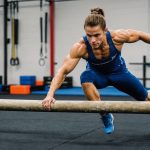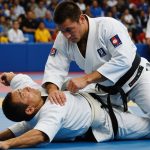Overview of Massage Therapy in Combat Sports
Massage therapy plays a pivotal role in combat sports by aiding in athletic recovery and enhancing overall performance. It involves manipulating muscles and soft tissues to promote relaxation, which proves essential in demanding sports environments. The primary purpose of massage therapy is to alleviate stress, prevent injuries, and expedite recovery, ensuring athletes maintain peak physical condition.
In the realm of combat sports, several types of massage are prevalent. Swedish massage is often employed for its relaxing effects, promoting circulation and flexibility. Deep tissue massage targets deeper muscle layers, addressing chronic muscle tension and improving range of motion. Conversely, sports massage is specifically tailored to the needs of athletes. It focuses not only on reducing muscle soreness but also on preparing the body for vigorous activity and mitigating the risk of injuries.
Also to read : Maximize your kickboxing strength: the ultimate resistance band guide for uk fighters
Recovery is a critical component of athletic performance, with adequate rest preventing burnout and enabling athletes to sustain high levels of performance. Incorporating massage therapy into an athlete’s routine fosters quicker repair of muscles, contributing significantly to recovery. Thus, athletes can train more effectively and perform optimally in competitions. This synergy between massage therapy and athletic recovery underscores its indispensability in the world of combat sports.
Physiological Effects of Massage Therapy
The physiological effects of massage therapy are profound, particularly in the context of muscle recovery. Scientific understanding suggests that massage therapy facilitates recovery by increasing blood flow, thereby delivering essential nutrients to muscles. This improvement in circulation can significantly reduce recovery time, enabling athletes and physically active individuals to resume their activities sooner.
Have you seen this : Ultimate nutrition strategies for effective muscle recovery: essential insights for uk combat sports athletes
Impact on Muscle Recovery
Massage therapy enhances muscle recovery through several mechanisms. By alleviating tension and reducing inflammation, it helps in the repair of muscle fibres damaged during exertion. This process is critical for restoring muscle function and strength efficiently. Recent studies also highlight that regular massage therapy sessions can lead to lower levels of muscle creatine kinase, an indicator of muscle damage.
Role in Reducing Muscle Soreness
Massage therapy is recognised for its effectiveness in diminishing muscle soreness. Post-training soreness, commonly known as delayed onset muscle soreness (DOMS), can be particularly uncomfortable. Through gentle manipulation of muscle tissues, massage therapy not only alleviates soreness but also reduces stiffness and increases flexibility, crucial for maintaining optimal performance.
Influence on Overall Performance
Beyond recovery and soreness reduction, massage therapy positively influences overall performance. By ensuring that muscles remain pliable and less prone to injury, athletes can sustain high levels of performance. This holistic approach to muscle care underscores why massage therapy is an invaluable component in sports and physical training regimens.
Types of Massage Techniques Utilized
Massage is a powerful tool for athletes, especially in combat sports, where physical exertion is intense. Swedish massage, known for its relaxing strokes, primarily targets overall relaxation, helping athletes de-stress after rigorous training.
Deep tissue massage delves deeper, focusing on muscle layers and fascia. It’s crucial for undoing knots and relieving chronic tension, making it a favourite among combat athletes who tend to experience high muscle strain. Unlike Swedish massage, deep tissue aims to improve flexibility and reduce pain over time by breaking down scar tissue and increasing circulation.
Sports massage specifically caters to athletic needs. It can be tailored to different phases of training: pre-event, to boost performance; post-event, to reduce soreness; and maintenance, to prevent injury. Sports massage combines various techniques, including stretching, to enhance range of motion and alleviate muscle tension.
Combat sports athletes often benefit most from targeted approaches like deep tissue and sports massage. These techniques are designed to manage specific issues like muscle overuse and fatigue. They promote quicker recovery, reduce injury risk, and improve overall athletic performance.
Selecting the right technique depends on the athlete’s needs, focusing on maximizing recovery and maintaining peak physical condition, making massage an essential part of an athlete’s regimen.
Athlete Experiences and Testimonials
Athlete testimonials serve as a bridge between theory and practice, offering insights into the real-world applications of techniques.
Case Studies of Combat Sports Athletes
Consider Emma Jones, a prominent UK combat sports athlete. Her journey through injury and recovery sheds light on the profound impact of massage therapy. After a debilitating shoulder injury, Emma integrated massage sessions into her treatment regimen. She reported enhanced muscle flexibility and a greater range of motion. Emma’s case underscores the tangible benefits of targeted therapy, illustrating why many athletes advocate for this approach.
General Feedback from the Combat Sports Community
The broader combat sports community shares a consensus: massage therapy is a vital component of athletic recovery. Many athletes express a shared sentiment; regular therapy sessions contribute significantly to reducing muscle tension and improving overall well-being. Satisfaction rates are notably high, with athletes frequently praising therapy for its immediate and cumulative benefits. This aligns with Emma’s individual experience, reinforcing the community’s general stance.
Personal Recovery Journeys
Recovery stories highlight the transformative experiences athletes undergo. For instance, Alex, a mixed martial artist, talks about overcoming chronic soreness through consistent massage therapy. He noted a marked decrease in recovery times, allowing for faster returns to training. Such personal experiences amplify the chorus of support for massage therapy within the athletic community, offering both hope and guidance for fellow athletes navigating similar challenges.
Practical Advice for Athletes
For athletes searching for optimal performance enhancement, recovery strategies play an essential role. Massage therapy, a time-honoured technique, is crucial for effective post-training recovery. Athlete advice often recommends massages because they reduce muscle tension and expedite the healing process. Integrating massage therapy into a training regimen can catapult athletic performance to new heights.
Recommended Frequency and Timing of Massage Sessions
Athletes should consider scheduling massage sessions one to two times weekly during the active training phases. Such frequency ensures timely recovery of muscles and mitigates injury risks. For peak effectiveness, massages should be planned around intense workouts or competitions, capitalising on their rejuvenating benefits.
Selecting a Qualified Massage Therapist
Choosing a competent therapist is vital to ensuring proper massage techniques tailored for athletes. Seek therapists with sports massage credentials and proven experience dealing with athletes’ unique needs. Engaging with those possessing practical sports knowledge guarantees a more beneficial outcome for recovery strategies.
Integrating into Overall Training
To derive maximum mileage, massage sessions should sync seamlessly within the overall training programme. Incorporating massages as part of the standard recovery regimen transcends mere luxury; it emerges as a practical tip for sustained performance enhancement. An astute blend of training and recovery holds the key to athletic brilliance.
Trends and Statistics in the UK Combat Sports Community
The UK combat sports scene is witnessing an unprecedented evolution. Trends in sport-specific recovery techniques are rapidly transforming training regimens, with statistics indicating a significant shift towards holistic approaches.
Growing Popularity of Massage Therapy
Recently, massage therapy has surged in popularity as a recovery method among combat sports athletes. This uptick is primarily due to its potential to alleviate pain, improve circulation, and enhance flexibility. Statistics reveal that a majority of athletes now incorporate some form of massage into their training schedules. This trend is reflective of a broader acceptance of alternative therapies and a push towards more personalised recovery strategies.
Recent Studies and Findings
Recent studies underscore the effectiveness of massage in reducing muscle soreness and facilitating quicker recovery. Statistics from surveys show a marked preference for customised massage therapies tailored to individual needs. Such interventions are seen as complementary to traditional methods, allowing athletes to maintain peak performance in competitive scenarios.
Future Directions for Recovery Practices
Future trends suggest an even greater emphasis on massage therapy within athletic training regimes. Embracing advanced techniques, such as sports-specific massages, is predicted to become standard practice. The focus will likely shift towards integrating statistics-driven approaches to consistently optimise recovery processes. Such advancements promise enhanced athlete well-being and performance longevity.











